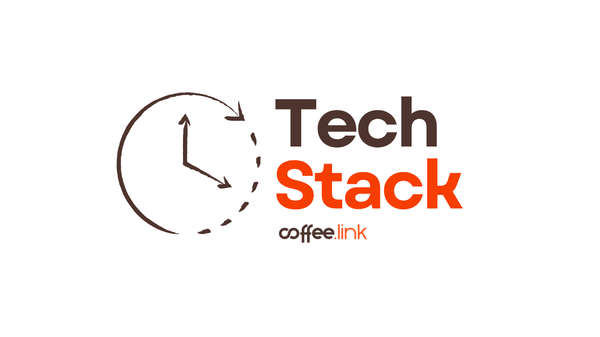Pharmaceutical companies pour billions into drug candidates every single year only to have a vast majority fail clinical trials. The overall success rate for clinical development stands at just 7.9%. This means that more than 90% of drug candidates never reach the market. The high attrition rate can be traced back to one of the processes key to the earliest stages of drug discovery, molecular docking — the computational prediction of how drug molecules bind to protein targets.
Despite being pivotal for screening and pipeline progression, this stage remains a fundamental challenge for classical computers because of the sheer complexity of molecules. Drug molecules operate under quantum mechanical laws, and accurate simulations demand computational resources that grow exponentially with molecular size.
This is where quantum simulation can become a game-changer. Many quantum computing applications still seek practical footholds, but simulation tackles molecular interactions where quantum advantage is compelling and increasingly evidenced. Cutting-edge research demonstrates that quantum algorithms can provide more precise and biologically pertinent docking predictions, especially for complex molecular assemblies. The dialogue now shifts from if quantum computing will reshape drug discovery, to when and to what extent it will do so.
The Foundations of Molecular Docking
Molecular docking attempts to predict binding affinity, how tightly a drug molecule will stick to its protein target. This is governed by the quantum behaviour of electrons, including how they distribute themselves, form bonds, and create electromagnetics forces crucial for molecular integrity.
Failures in clinical trials, particularly those due to lack of efficacy, trace back about 40% to 50% to inaccurate binding predictions. Traditional docking approaches approximate these interactions using classical force fields and scoring functions that simplify complex quantum phenomena, thereby introducing fundamental inaccuracies.
These predictive errors spill over into drug development. A small misestimation at the docking stage leads to advancement of candidates that are, at best, suboptimal, only to see these fail later costly phases due to real-world behaviour that betrays simulations. Considering how 60% of research and development budgets vanish into such attrition — and that each approved drug costs between $1 to $2 billion to bring to market — even modest improvement in early prediction accuracy represents dramatic cost savings and faster delivery of treatments for critical diseases.
How Quantum Simulation Addresses the Challenge
Quantum simulation is quite different from quantum machine learning. Instead of just looking for patterns in data like quantum machine learning does, quantum simulation uses quantum bits (qubits) to act like the molecules themselves. Because qubits follow the rules of quantum mechanics just like electrons in molecules, they can represent many possible states at once, something ordinary computers cannot do well.
One popular tool is the Variational Quantum Eigensolver (VQE). It is a teamwork system between a quantum computer and a classical one. The quantum computer creates a 'trial' version of a molecule. It also measures the molecule's energy. The classical computer then adjusts the settings to find the molecule's lowest energy or ground state which chemists need to understand how the molecule behaves.
In 2024, Li and colleagues built a quantum workflow specifically for drug design. They showed that this approach can accurately simulate processes like breaking chemical bonds, thus helping researchers understand how certain drugs activate in the body.
Another approach is the Quantum Approximate Optimisation Algorithm (QAOA) which applies similar ideas to molecular docking. A 2024 upgrade called DC-QAOA improved the speed and accuracy of these simulations by using a technique called counterdiabatic driving to make the quantum circuits more efficient. The researchers tested it on several real biological systems (including those related to COVID-19, diabetes, and HIV) and found it performed better, especially for more complex docking problems.
Together, these quantum algorithms don’t just estimate what molecules might look like. They can come much closer to solving the key quantum equations that describe molecules, letting scientists model floppy proteins more accurately, capture delicate chemical interactions, and search through many more possible drug molecules than before.
Most recently, in 2025, Liliopoulos and co-authors introduced a new quantum method that uses a modified version of Grover’s famous search algorithm to identify where a drug can bind to a protein. Importantly, they ran this on actual quantum hardware — not just simulations — marking a big step forward toward practical quantum-powered drug discovery.
From Proof-of-Concept to Practice
Quantum methods for drug discovery have come a long way. Early experiments focused on tiny 'toy' molecules like lithium hydride (LiH) and water which were useful for testing ideas, but not for solving real pharmaceutical problems. Today, researchers are using quantum tools on challenges that matter in real drug development.
A major step forward came from Li and colleagues (mentioned earlier), who built a hybrid quantum–classical pipeline aimed directly at real-world tasks. They tackled two big ones:
- Predicting Gibbs free energy for how prodrugs activate in the body, and
- Simulating covalent bond interactions inside actual drug targets.
To show that this works in practice, they modeled how the cancer drug Sotorasib binds to the KRAS(G12C) protein, a key target in oncology. They adjusted their simulations to reflect real biological conditions and combined quantum calculations with classical molecular mechanics (QM/MM), demonstrating the feasibility of quantum chemistry in realistic pharmaceutical settings.
Momentum is growing globally. In 2023, the Quantum Computing for Drug Discovery Challenge brought together more than 70 teams from 65+ organizations in 12 countries. Using IBM’s Qiskit platform, participants competed to design algorithms that could accurately estimate molecular ground-state energies. The event underscored how much attention quantum-enabled drug discovery is receiving across industry and academia.
Quantum optimization methods like QAOA have also taken major strides. Researchers are now applying these algorithms to docking problems involving 14 and 17 interacting components, bigger than the previously published maximum of 12. These advances work well on today’s noisy, imperfect quantum computers (the so-called NISQ era), showing that quantum docking is becoming increasingly viable in practice.
Looking Forward
Quantum computing is making real progress, but it isn't yet ready to handle full drug discovery pipelines. Today's quantum processors still suffer from noise and short coherence times. So, errors tend to build up quickly, limiting how long or how accurately they can run. True error-corrected machines, capable of handling complex molecular systems are still perhaps at least a decade away from being put to use.
Biology adds its own set of variables and challenges. Proteins are flexible, messy molecules, and designing quantum algorithms that capture this complexity can be difficult. A shortage of experts who understand both quantum computing and molecular sciences also slows progress.
Even so, the potential of quantum simulations is huge. Clinical trial success rates have dropped to record lows, and early-stage failures, as we saw earlier, cost the industry billions every year. Quantum tools that improve predictions in the discovery phase could, therefore, dramatically speed up drug development, enhance the modelling of diseases and reduce the high attrition rates that drive up costs.
Over the next decade or so, better hybrid workflows and the arrival of error-corrected quantum processors will give us more accurate simulations of real proteins. Soon we may see end-to-end quantum-driven drug design, turning quantum simulation into a core engine of pharmaceutical innovation.








